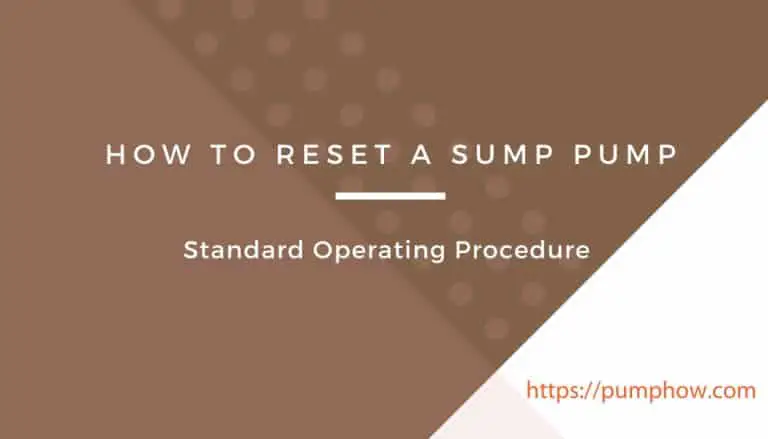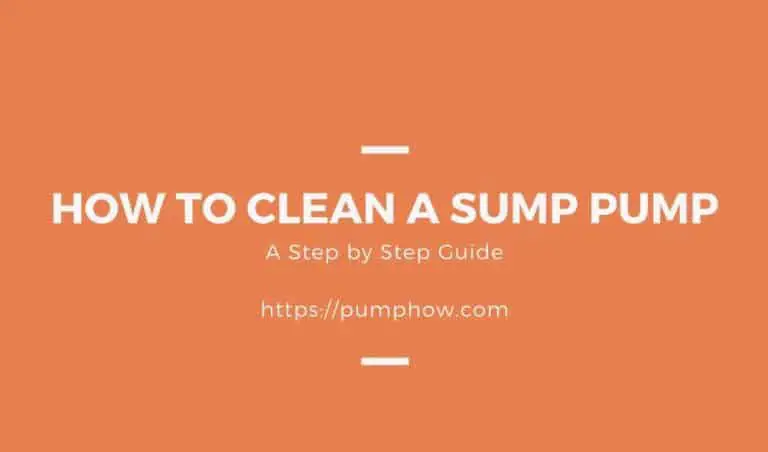A sump pump is a vital part of a home’s basement waterproofing arrangement. Everything you do, from buying a sump system to keeping it running for years, are parts of your experience with the pump.
When one wants to know how to use something, the likely answer is going to be a step-by-step discussion. With a sump pump, it’s different because the majority of units sold these days run automatically leaving only the ‘maintenance’ part to the owner/user.
However, the right methods to use a pump can’t be overlooked for they are critical to its lifespan and your success in preventing basement flooding.
This article offers in-depth insights on how to use a sump pump so that you, as the operator of a sump system can figure out every possible situation.
Considerations to Make Before Buying & Setting Up A Sump Pump
Certain factors like the type, size, location, and installation method come relevant as you intend to use a sump pump. These considerations are mostly associated with your buying and setting up a pump, but they still have something to do with your overall experience.
Type and Capacity
Although several sump types are available, it mostly comes down to two choices, such as pedestal and submersible pumps with both offering something for everyone.
If you want a long-lasting pump and don’t like noises coming from your basement, the submersible type is good for you. For greater affordability yet with a compromise on the noise and durability factor, a pedestal pump is preferable to a submersible.
Speaking of the capacity of sumps, a standard rate is 1,800 gallons per hour (GPH) or slightly higher like 2,000 or 2,200 GPH. However, you may still look for something bigger.
Basements in some areas are more likely to become flooded than others. Again, power outage isn’t a surprise, especially during natural calamities.
So, homeowners in those neighborhoods have to ensure that their residential sumps work without remaining idle for a considerable amount of time, and that’s where the need for a backup pump is understandable.
That being said, you’ve to take care of two pumps instead of one, which means more efforts from your end to keep the pumps up and running. Thus, the type and pumping capacity affect how you may feel about your sump pump(s).
For more information about these factors, you can go through our comprehensive guide to choose a combo sump pump.
Location and Installation
As you may have known that a sump pump is kept in a basin or pit which is installed in a place where water initially accumulates. It’s often the lowest zone in your basement. Sometimes, these pumps are set up in the bottom of the crawlspace. How does the location affect your experience?
If the basement is very hard to reach, or there’s a problem in your basement which makes it necessary for you to check every now and then, you can’t provide the pump with proper maintenance tweaks so comfortably.
Now, let’s try to figure out what it is with the installation. A sump pump that’s not correctly installed won’t perform up to your expectations, no matter how much you had paid for that or how prestigious the manufacturer is.
Sometimes, the discharge line may not be set up properly while at times, there’s a defect in the placement of the pump. Maybe, it doesn’t sit level.
Perhaps, the installation wasn’t the problem. The sump pit is at fault. One of the most common examples includes an uneven distribution of gravel under and around the pit.
The float switch may not get the space or flexibility it requires for the regular function. It may also get jammed or stuck. Either way, you can’t have the most of your sump system. Chances are you might need/want to replace it long before its usual service life.
Remember that a sump pump, just like any similar appliance, works at its peak only if all its requirements are fulfilled, and most of them are taken care of during the installation procedure.
Got curious about the correct way to install? You can read our complete sump pump installation guide and learn it the right way which isn’t essentially the hard one.
How to Use A Sump Pump?
Assuming that a complete pump setup in place, you need to ensure its functional state, maintenance, repair, and replacement (when necessary).
Testing the Pump
Locate the electrical cords first. There should be two of them. The cord to the pump plugs into the back part of the plug of the float cord.
- With both cords unplugged, you need to plug the cord of the pump into the power outlet.
- If you hear a humming sound after turning on it, it’s okay.
- Plug the cords back into the way there were.
Some sump pumps come with only one cord. So, the testing procedure will be a little different.
- Pour water (20 liters) into your sump pit slowly.
- It should cause the pump’s float to rise, and when it does, the pump starts automatically. Remember that this mechanism is applicable to automatic sumps.
- Then, the water should be pumped out without any hindrance.
- The motor should turn off automatically by the time all the water has been removed. You can repeat the process to observe its pumping cycle.
Yours may not be an automatic type or pouring water manually may not be an option for you. In that case, following these steps.
- Lift the float manually.
- Check if the pump turns on.
- Allow the pump to run for only 3-5 seconds to check its continuity.
Don’t leave it running for longer than the recommended duration because by doing so, you’ll only cause damages to the sump motor.
Troubleshooting the Pump
None can deny the possibility of a sump system’s failure. Apart from any defect in the product, there’re several reasons for such disappointments. But, don’t leave hope right away because you can fix most of them easily.
Overwhelmed Sump System
It usually happens when you’ve only one primary system which isn’t good enough for handling the particular need of your basement. If your basement receives a higher volume of water than the pump can handle, it’s easy for the system to get overwhelmed and likely for the wet basement to remain so.
Quick Burn-out
In addition to being underpowered, the pump, if it comes built with low-quality material, may not work well. Important components like the float switch or parts of the motor may burn out in the face of heavy-duty.
Solution to These Issues
The best way to deal with these problems is to find a pump that offers adequate pumping capacity and uses high-quality material. But, you can rely on a backup sump system if spending a few hundred dollars isn’t a big deal for you. It’s at least a better choice than paying for another primary system.
Sump Pit with No Water
If your sump system has been chosen with the demand in mind and there’s still little to no water in the pit, it indicates that the pump hasn’t been installed properly or it’s not connected to any regular drainage system.
You can’t expect the pump to work as it should without having a drain tile along the basement’s perimeter. It can be installed both internally and externally. Its job is to collect the water that comes, channel the volume using gravity toward the pump, and then discharge into the sump pit. A drain tile that is clogged or improperly pitched fails to channel the water appropriately.
Solution to the Problem
Since it’s all about the drainage system, you must inspect it for issues and then fix them. In case of the absence of a drainage system, you should consider installing one.
Loss of Power
Power failure isn’t a rare incident. What if the power is available, but your sump pump’s functionality isn’t? A tripped circuit breaker, an unplugged unit, and a broken power cord are the most common causes of these problems.
What Can You Do?
- Inspect the power cord thoroughly and replace it if it’s not in good shape.
- Check the connection of the cord to its dedicated outlet. Leave it securely plugged.
- Having a tripped circuit breaker, you can only reset it; so it gets back to the regular way.
Though installing a secondary system seems the last thing anyone would want, it’s really useful for those who are to stay away from home frequently.
Imagine what would happen if you weren’t at home during and after a downpour and the sump that was running got suddenly turned off due to power loss? Sure, you know better than thinking about the consequences and staying idle.
An Active Pump without a Pause (Continuously Running)
You’re lucky if you haven’t seen it yet. But, it happens more frequently than you know. Unless you don’t take actions, the pump won’t take much long before burning out.
Common causes of a pump that’s on overdrive include a stuck switch, an oversized/undersized pump and liner, a broken/missing check valve, and a continually flooding pit.
You can discover more about this particular problem by reading another article on a constantly running sump pump, but for now, let’s take a look at the potential causes and possible solutions.
| Problems | Causes | Solutions |
| Stuck Switch |
|
|
| Oversized/Undersized Pump and Liner |
|
|
| Broken/Missing Check Valve |
|
|
| Continuing Sump Pit Flooding |
|
|
You should run a rigorous inspection into the basement to find out the real cause of any of the issues pointed above. With any doubt in mind about your success in the job, you can consult a professional or hire one to do it.
Even though everything may seem to run perfectly, you should consider asking an expert to inspect the whole system and inform you of a potential issue (if any) before any indication that rough weather is imminent.
Adopting a Maintenance Schedule
You may not get big on this part. Nonetheless, it’s important to make a routine and stick to that to avoid having anything seriously wrong.
Maintaining or servicing a sump pump involves certain activities like cleaning the pit, pump’s surface and bottom, cleaning the float switch if possible, inspecting and working on the discharge line, and testing the system for functional consistency.
Doing all these at least once a year is recommended, and twice a year is good. If you have a couple of hours to spare during the dry season, you can commit to it because you can’t have a malfunctioning pump during the wet seasons.
Got any questions or confusion in mind? Check out this article on how to extend a sump system’s service life.
Avoiding 4 Common Mistakes
People who have got sump pumps only recently may go wrong about their sump pumps ending up making mistakes that not only cost them the money for a replacement but also invite the dangers of a flooded basement.
The following mistakes are common and are often the result of our lack of attention to the home’s sump system and basement.
Not Inspecting the Parts
It is common for many to spend days after days without even caring if the pump is doing its job. As a result, some of us care little to check the level of the pump which may need to be raised or lowered in accordance with the season. The same thing happens with the check valve or float switch. All of these parts are responsible for important tasks. So, take a look at them once a while.
Letting Debris/Wastes into the Pump and Discharge Line
What debris can do to a sump system shouldn’t be unknown to you. It’s okay if you want to give some maintenance tweaks once a year, but you can’t let debris find its way into the pump, pit, discharge, and literally everywhere.
Some think it’s not a big deal to leave these things the way they’re. They’re right but only for a short time. Repeated negligence may cause the drainage system to work very poorly or stop working at all and create a mess for the pump, especially the float switch.
Whatever tasks you need to do to avoid these mistakes may seem to be the part of maintenance, but they’re not. Rather, they require to be remembered and done more frequently than the upkeep actions.
Ignoring the Signs That Mean Something
Loud/strange noises (hammering, clanging, thudding, etc.) coming out of the basement sump, irregular cycling even if everything seems fine, visible rusts, etc. eventually tell you one thing that it’s time to get a new pump.
Older pumps (7+ years) that still seem to work may become pout of service anytime, and you’ll be at a loss if that happens during a storm or downpour. So, don’t turn a blind eye to these warning signs.
Taking a Secondary Pump for Granted
With a sump that can handle 3000 GPH or more, you may not worry. Well, here’s what happens more often than we can know.
A sudden storm came and got followed by heavy showers. Power went out for several hours. It’s unknown how much water still exists in the basement. One thing is certain that the sump system (when it’s the only one) isn’t working.
Power came back, but the volume of water already became way too much for the pump to remove. The motor keeps running for hours and hours. You know it won’t stay that good if such is a common event.
So, you can buy a secondary pump that works when the main isn’t. Thus, the full lifespan of the main pump can be reached and unnecessary expenses or efforts for untimely repair or replacement can be avoided.
Final Words
As you’ve almost neared the end of this guide, you should concentrate on a few more matters, particularly for the ‘testing’ task. These three findings help you determine whether your pump is doing great or not.
The pump keeps running even during very little rain. It’s less than an ideal scenario. Again, the sump system runs only during the rain/storm and shuts off when the need isn’t obvious. It’s acceptable/standard. Another level of need you’ll see is when the pump doesn’t run except once or twice.
At this end, we can only hope that you’re aware of the dos and don’ts. Feel free to ask anything about sumps and the way to use them. We’ll write back!






